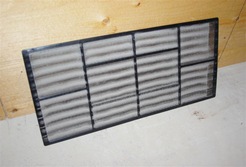In a lawsuit in the United States (where else eh?) this week a man was awarded $1.5 million USD for an injury to his fingers that was caused by a table saw. The man injured his fingers while using a Ryobi table saw when he was installing oak hard wood flooring in 2006.
The thing is, there was nothing wrong with the table saw. The table saw didn’t fail to function as designed, or break, or have anything wrong with it. The Ryobi table saw met all current safety standards. The problem was that is was not equipped with a flesh detection technology to stop the blade!
Personally I reckon the guy must have been an idiot who should never have been operating a table saw in the first place. Also the people on the jury must have never used power tools before, or something, because I really can’t understand how this could possibly have happened!
If the lawsuit sets a precedent then we can expect to see all table saws in the future equipped with flesh detection technology. This will probably add at least $250 to the cost of a low end table saw, and more to the higher end more expensive table saws.
I think that the flesh detection table saw, currently made by SawStop, is a cool invention. It would especially be suitable for wood working shop classes in school (we had a shop teacher at my old school cut off his fingers, not a good example). I don’t think though that it should be required on all table saws.
The cost is extremely prohibitive for the table saw technology. The additional cost for the flesh detection technology will be about $250.00. Not only that, but if the technology is triggered you will need to replace the brake mechanism and the blade. Unfortunately the mechanism can be triggered by something as simple as moist wood, which would cost you about $150 depending on the blade.
You can read more about the lawsuit and the flesh detection technology over at Pro Tool Reviews. Here is a video of the technology in action:


